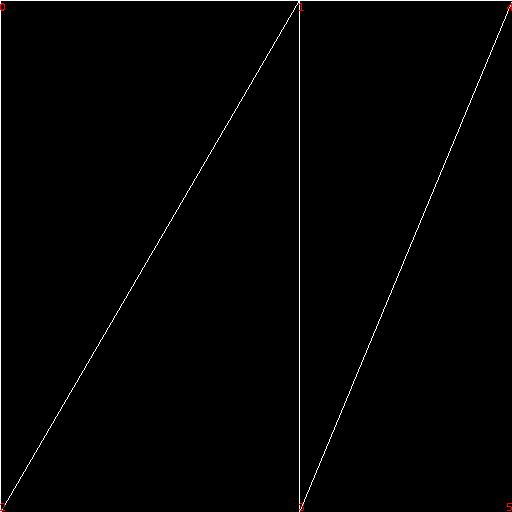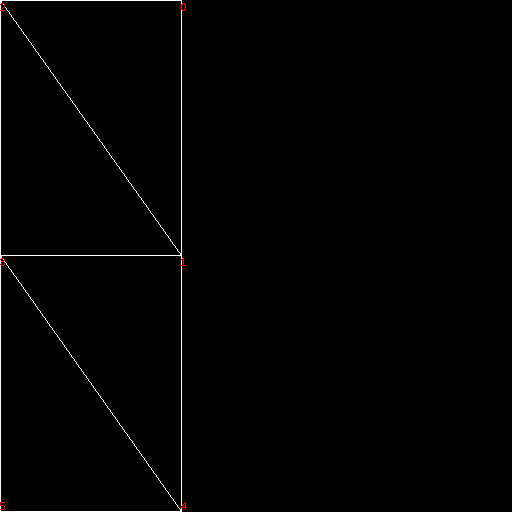http://go.microsoft.com/fwlink/?LinkID=512686
Copyright (c) Microsoft Corporation.
February 21, 2024
This package contains UVAtlas, a shared source library for creating and packing an isochart texture atlas.
This code is designed to build with Visual Studio 2019 (16.11), Visual Studio 2022, clang for Windows v12 or later, or MinGW 12.2. Use of the Windows 10 May 2020 Update SDK (19041) or later is required for Visual Studio. It can also be built for Windows Subsystem for Linux using GCC 11 or later.
These components are designed to work without requiring any content from the legacy DirectX SDK. For details, see Where is the DirectX SDK?.
-
Inc\-
Public Header File (in the DirectX C++ namespace):
- UVtlas.h
- UVAtlasCreate
- UVAtlasPartition
- UVAtlasPack
- UVAtlasComputeIMTFromPerVertexSignal
- UVAtlasComputeIMTFromSignal
- UVAtlasComputeIMTFromTexture
- UVAtlasComputeIMTFromPerTexelSignal
- UVAtlasApplyRemap
- UVtlas.h
-
-
geodesics\,isochart\- Library source files
-
UVAtasTool\- Command line tool and sample for UVAtlas library
-
build\- Contains YAML files for the build pipelines along with some miscellaneous build files and scripts.
Documentation is available on the GitHub wiki.
All content and source code for this package are subject to the terms of the MIT License.
For the latest version of UVAtlas, bug reports, etc. please visit the project site on GitHub.
Zhou et al, "Iso-charts: Stretch-driven Mesh Parameterization using Spectral Analysis", Eurographics Symposium on Geometry Processing (2004) pdf
Sander et al. "Signal-Specialized Parametrization" Europgraphics 2002 pdf
-
Starting with the December 2020 release, this library makes use of typed enum bitmask flags per the recommendation of the C++ Standard section 17.5.2.1.3 Bitmask types. This is consistent with Direct3D 12's use of the
DEFINE_ENUM_FLAG_OPERATORSmacro. This may have breaking change impacts to client code:-
You cannot pass the
0literal as your option flags value. Instead you must make use of the appropriate default enum value:UVATLAS_DEFAULTorUVATLAS_IMT_DEFAULT. -
Use the enum type instead of
DWORDif building up flags values locally with bitmask operations. For example,UVATLAS options = UVATLAS_DEFAULT; if (...) options |= UVATLAS_GEODESIC_FAST;
-
-
The UWP projects and the Win10 classic desktop project include configurations for the ARM64 platform. Building these requires installing the ARM64 toolset.
-
When using clang/LLVM for the ARM64 platform, the Windows 11 SDK (22000) or later is required.
This project welcomes contributions and suggestions. Most contributions require you to agree to a Contributor License Agreement (CLA) declaring that you have the right to, and actually do, grant us the rights to use your contribution. For details, visit https://cla.opensource.microsoft.com.
When you submit a pull request, a CLA bot will automatically determine whether you need to provide a CLA and decorate the PR appropriately (e.g., status check, comment). Simply follow the instructions provided by the bot. You will only need to do this once across all repos using our CLA.
This project has adopted the Microsoft Open Source Code of Conduct. For more information see the Code of Conduct FAQ or contact [email protected] with any additional questions or comments.
This project may contain trademarks or logos for projects, products, or services. Authorized use of Microsoft trademarks or logos is subject to and must follow Microsoft's Trademark & Brand Guidelines. Use of Microsoft trademarks or logos in modified versions of this project must not cause confusion or imply Microsoft sponsorship. Any use of third-party trademarks or logos are subject to those third-party's policies.
Thanks to Andrew Farrier and Scott Matloff for their on-going help with code reviews.



